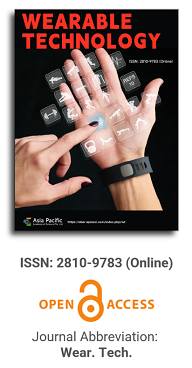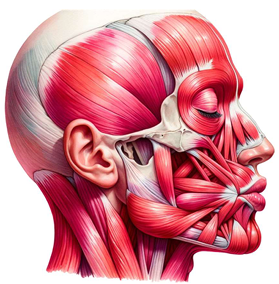

This paper delves deeply into the innovative realm of integrating human emotions with wearable technology. The primary focus is on the conceptualization and development of a kiss transfer device that harnesses the power of wearable technology to bridge the physical gap in human-human interactions. By investigating the intricate nuances of the human-human kissing process, the research seeks to replicate this intimate gesture through a technological medium. The paper not only elaborates on the anatomy, evolution, and hormonal dynamics of kissing but also underscores the transformative potential of wearable technology in capturing and transmitting these intimate moments. This exploration opens up new horizons for long-distance relationships, offering a tangible touchpoint that goes beyond traditional communication methods. Through this pioneering work, the research positions wearable technology as not just a tool for communication but as an extension of our human emotions and expressions.

This paper delves deeply into the innovative realm of integrating human emotions with wearable technology. The primary focus is on the conceptualization and development of a kiss transfer device that harnesses the power of wearable technology to bridge the physical gap in human-human interactions. By investigating the intricate nuances of the human-human kissing process, the research seeks to replicate this intimate gesture through a technological medium. The paper not only elaborates on the anatomy, evolution, and hormonal dynamics of kissing but also underscores the transformative potential of wearable technology in capturing and transmitting these intimate moments. This exploration opens up new horizons for long-distance relationships, offering a tangible touchpoint that goes beyond traditional communication methods. Through this pioneering work, the research positions wearable technology as not just a tool for communication but as an extension of our human emotions and expressions.
In a current cross-sectional experimental study, it was observed that the impact of diet and exercise on healthy life adherence in mature diabetes cases and their influence on glycated hemoglobin (HbA1c, average glucose) The diabetic patients (male and female) were anatomized in relation to adherence and suggested a diet with exercise plans that control the adverse effect of producing less insulin. A sample of 30 subjects, 30–50 years old, were selected randomly from 3 major hospitals (Jinnah, Mayo, and Services) and some private laboratories. A group of normal control subjects (N = 10) was also selected for further comparison. The HbA1c test has been taken before and after the implementation of the 12-week diet and exercise plan. This study utilized a simple random sampling technique, and normality was checked through the Shapiro-Wilk test. The data was analyzed through SPSS-22, and a paired sample t-test was utilized for further comparison. The lower HbA1c values indicate a better diabetes operation. These results clearly depicted that it controlled the worse effects of sugar patients, which also emphasizes the significance of adherence in achieving optimal glycaemic control. The result also concluded that a balanced diet and a combination of exercises control the glycaemic patients efficiently and effectively.
The article reflects various approaches of philosophy and programming to methods for solving the technical problem of creating and software implementation of artificial consciousness (AC). Various purposes of creation and basic approaches to determining the nature of AC are described. To solve the problem of creating an AC, an architecture is proposed that includes ten levels, starting from the basic level of collecting and systematizing information about the external world and ending with the upper level of influence on it, agreed with the person and the level of decision-making. The features of the delimitation of functions and the procedure for interaction between a person and an AC are considered in detail. In conclusion, the most important, from a programmer’s point of view, properties that characterize artificial consciousness are given.
The example of the absent-minded passenger problem illustrates the fundamental difficulty of estimating practical values of probabilistic parameters on the basis of general theorizing and allows us to give more accurate and subtle estimates of various parameters, as well as their practical computable approximation. This article is important for building systems of artificial intelligence and artificial consciousness, as well as for modern didactics of higher education, especially for the disciplines of “applied mathematics” and “theoretical computer science”. It is shown that a detailed study of a random process provides more significant applied materials than formally correct theoretical calculations.
This document mentions characteristics of portable devices that highlight their applicability in healthcare because they fundamentally allow monitoring outside hospital institutions and allow the prediction of health events. This writing is achieved with the review of updated information available in the world scientific literature. Additionally, the challenges and disadvantages associated with the implementation of wearable sensors are shown. The aim of the above is to highlight that portable devices improve medical care in a wide variety of environments, but are particularly useful for the remote management of pathologies.
Currently, technological developments have been used in several health cases. One technology used for health is a tool to measure the strength of muscle contractions. So far, measuring muscle contractions still uses manual methods, namely the measurement muscle strength test method. Apart from that, health workers also measure manually by feeling the muscles to be measured. The need for tools to measure muscle contractions in the medical world is quite large because these tools can be used for various needs of doctors and nurses. There are many commercialized products on the market. The first aim of this article is to review four products that are available on the market. The second aim is to provide an overview of the use of the four products that have been carried out by previous researchers and the results. This article also discusses various aspects of product specifications. The research results show that each product has its own advantages. When we compare these products, it is better for us to return to the kind of product we are looking for. For example, if we want a product with high-class features that is equipped with several games, then we can choose MyoBoy. Myo armband and Trigno™ are used to identify several movement force conditions that are influenced by muscle strength, which has been equipped with an Inertial Measurement Unit (IMU) sensor. MyoWare is used to make bionic hands or bionic legs that can be controlled using electromyography (EMG) and has a relatively economical price.
This article provides a comprehensive review of diabetic technology in India. Researchers are persistently integrating novel technologies and enhanced medical knowledge to offer further avenues for improving the well-being of individuals with diabetes. Continuous patient engagement is essential by using highly effective technologies that address pertinent issues, as certain problems can be resolved with precision. India has a demographically large population, characterized by a substantial segment of individuals with diabetes. The estimated prevalence of diabetes in India is approximately 8%, with type 2 diabetes accounting for half of these occurrences. India’s per capita expenditure on health constantly falls behind that of other developing countries. Refined statistical data indicate that India’s healthcare expenditure is <50% of the average expenditure observed in the Organization for Economic Co-operation and Development (OECD) countries.

Prof. Zhen Cao
College of Information Science & Electronic Engineering, Zhejiang University
China, China
Processing Speed
-
-
-
- <5 days from submission to initial review decision;
- 62% acceptance rate
-
-
Asia Pacific Academy of Science Pte. Ltd. (APACSCI) specializes in international journal publishing. APACSCI adopts the open access publishing model and provides an important communication bridge for academic groups whose interest fields include engineering, technology, medicine, computer, mathematics, agriculture and forestry, and environment.


 Open Access
Open Access



